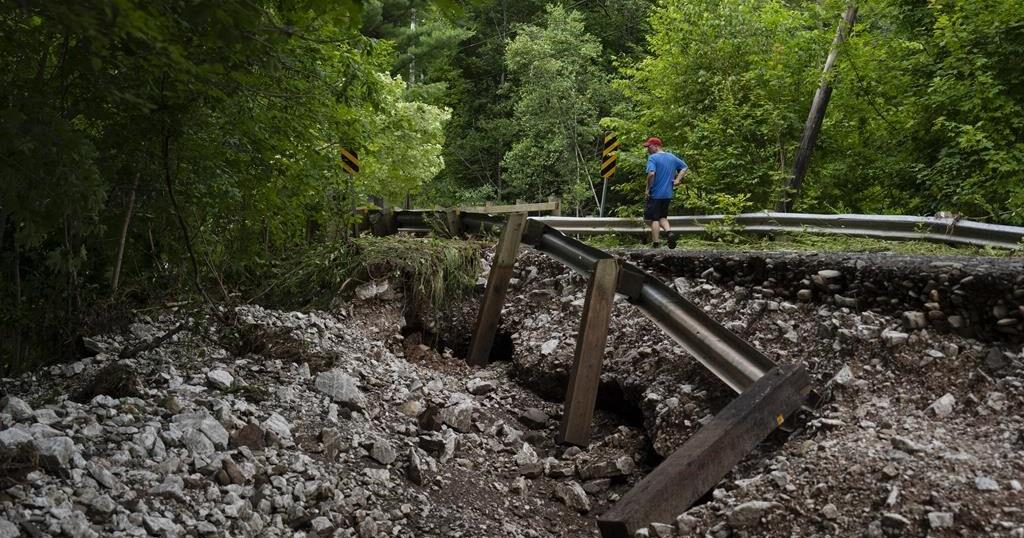WOLFVILLE, N.S. – A young person was found dead after they were swept away by floodwaters in western Nova Scotia Thursday, in a region still recovering from flooding a year ago that caused extensive damage and killed several people, including two children.
RCMP say they received a call just before 8 p.m. Thursday about a youth who has pulled into a water-filled ditch at a park in Wolfville, N.S., and disappeared under the rushing water. The young person was playing with friends when the flash flooding began, police said in a news release Friday.
The youth’s body was found around 11:30 p.m. Thursday after the water drainage system in the area was diverted during search efforts, the release said. The Mounties, the local fire department and members of three search and rescue teams were involved in the search.
“Today is a devastating day for our province,” said Nova Scotia Premier Tim Houston in a news release. “On behalf of all Nova Scotians, I offer my deepest condolences to the family and friends who are processing a devastating loss. I hope they find some comfort in knowing that they are not alone in their mourning.”
Police are not releasing the youth’s name, nor any identifying details about them.
More than 100 millimetres of rain fell in the region in just a few hours on Thursday night, as the remnants of hurricane Beryl swept through the province. Emergency alerts were issued in Digby, Annapolis, Kings and Hants counties, warning of flash floods and urging residents to be vigilant.
For many in the area, including retired paramedic Amanda Dunfield in Windsor, N.S., the rushing waters were a grim reminder of the flooding nearly a year ago that tore up roads, forced hundreds to evacuate and killed four people, including two young children.
“Nobody quite knew where to turn and things were almost subsiding by the time there was any information flow,” Dunfield said about the disorganized response to the floods last year, when more than 250 mm of rain fell over 24 hours on July 20 and 21.
Dunfield said she and her neighbours spent all night Thursday pumping water from their basements. The community’s sewer system is too small — and has been neglected over the years — to handle the large floods that seem to be becoming more common, she said.
In Halls Harbour, N.S., about 60 kilometres northwest of Windsor, pictures posted to social media showed that part of West Halls Harbour Road had collapsed into the sea. The road appeared to be split in two and impassable.
Kings County Coun. Dick Killam said he noticed at around 11:30 p.m. Thursday that a lagoon on the other side of that road had begun to overflow and spill onto the asphalt and onto a newly installed boardwalk. Two hours later, the boardwalk was destroyed, he said.
Wendy Donovan, the mayor of Wolfville, N.S., said the rain came as tides were rising, which caused major flooding in parts of the town. “It’s the impact of climate change … and there is going to need to be a government response,” she said in an interview.
“There is also going to need to be an individual response because no matter how high you build your dikes or how big you make your storm sewers, if the water can’t escape, this is going to happen.”
Brett Tetanish, chief of the Brooklyn, N.S., volunteer fire department, said some roads in the West Hants Regional Municipality were completely submerged. Many people had flooded basements, he added in an interview.
Tetanish said his crew assisted the Hantsport volunteer fire department as they rescued three people whose home was cut off from the road by floodwaters. The fire chief said many people in the communities are reliving the anxiety and grief wrought by last year’s floods.
“I think everyone still thinks about the floods last summer …. That plays on your mind,” he said.
This report by The Canadian Press was first published July 12, 2024.
— By Michael Tutton and Cassidy McMackon in Halifax

























